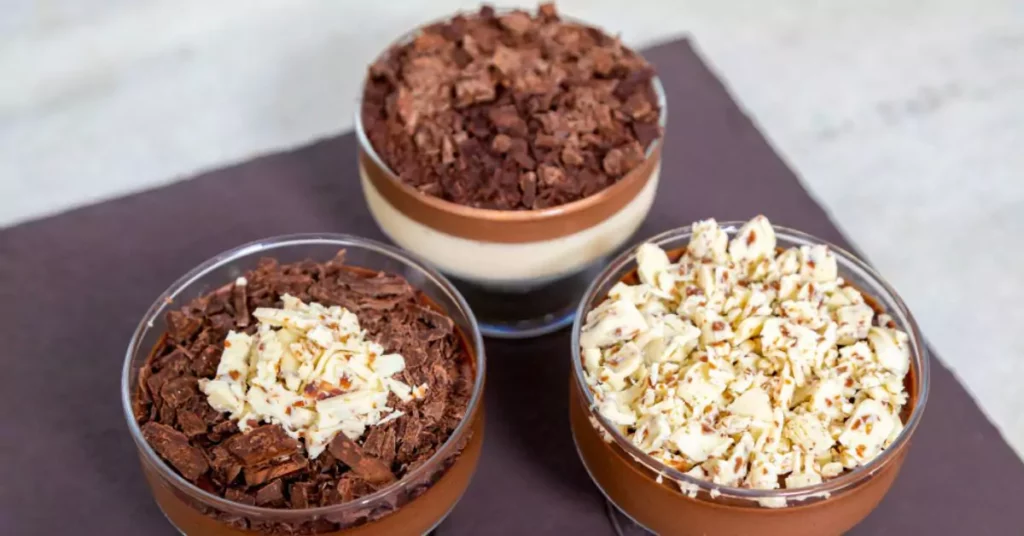
Brioche is a classic French bread known for its rich, buttery flavor and soft, tender crumb. This versatile bread is perfect for a variety of uses, from making decadent French toast to crafting gourmet sandwiches. Follow this detailed recipe to create your own delicious brioche bread at home.
Ingredients For Brioche Bread
To make this luxurious brioche bread, you will need:
Metric – US Customary
- Warm Milk: 120 mL (½ cup)
- Active Dry Yeast: 9 g (about 2 ¼ teaspoons)
- Honey: 10 mL (2 teaspoons)
- Large Eggs: 5 (or 4 large eggs and 2 egg yolks)
- Vanilla Extract: 10 mL (2 teaspoons)
- Granulated White Sugar: 60 g (5 tablespoons)
- All-Purpose Flour: 500 g (4 cups + 2 tablespoons, measured by spoon and level method)
- Sea Salt: 1 ½ teaspoons, fine grind
- Unsalted Butter: 250 g (1 cup + 2 tablespoons), very soft and roughly divided into four portions
Step-by-Step Instructions For Brioche Bread
Day One: Making the Dough
- Measure Ingredients:
- Measure all the ingredients and have them ready.
- Activate the Yeast:
- In a mixing bowl, combine the warm milk, active dry yeast, and honey. Whisk gently to combine and set aside for 10 minutes to allow the yeast to activate.
- Ingredients:
- 120 mL warm milk
- 9 g active dry yeast
- 10 mL honey
- Combine Wet Ingredients:
- Add the eggs and egg yolks to the mixture and whisk gently to break the yolks.
- Ingredients:
- 5 large eggs (or 4 large eggs and 2 yolks)
- Form the Dough:
- Add the vanilla, granulated white sugar, all-purpose flour, and sea salt to the bowl. Mix to form a scraggly dough.
- Ingredients:
- 10 mL vanilla
- 60 g granulated white sugar
- 500 g all-purpose flour
- 1 ½ tsp sea salt
- Knead the Dough:
- Using the dough hook attachment on a stand mixer, knead the dough on speed 2 or 3 for about 3 – 5 minutes.
- Divide the butter into four portions. Add the first portion of butter in increments after the first 5 minutes of kneading. Allow the butter to mix well into the dough (about 2 minutes).
- Ingredients:
- 250 g unsalted butter
- Incorporate Butter:
- Repeat with the other three portions of butter, kneading the dough for about 2 – 3 minutes after each addition. Make sure to stop the mixer to scrape down the sides and bottom of the bowl between kneading. You will have incorporated all the butter in about 9 – 12 minutes of kneading time.
- Once all the butter is incorporated, continue to knead the dough for a further 5 – 15 minutes on speed 5 or 6, until the dough is smooth and elastic.
- First Rise:
- Flour your work surface and turn the dough out onto it. Lightly flour your hands and the surface of the dough to prevent sticking.
- Fold in the edges of the dough towards the middle and gently press them in. Flip the dough over and shape it into a tight ball using the heel of your palms.
- Place the dough ball back in the mixing bowl (or another large bowl). Let it rise in a warm place (72°F) until it has doubled in size, about 1 hour.
- Deflate and Rest:
- Turn the dough out onto a lightly floured surface and press down gently to deflate. Fold in the edges again towards the middle, flip the dough over, and tighten into a ball. Place the dough back in the bowl, cover, and chill in the fridge for at least 8 hours, or up to 24 hours.
Day Two: Shaping and Baking the Bread
- Prepare the Dough:
- Remove the chilled dough from the fridge. It will be much easier to work with now.
- Prepare the Loaf Pans:
- Butter and dust two 8.5 x 4 inch standard loaf pans with flour. You can also use 9 x 5 inch loaf pans.
- Keep a bowl of flour, a pastry brush, and a dough scraper/cutter ready.
- Divide the Dough:
- Turn the dough out onto a lightly floured surface. Deflate the dough by flattening it lightly. Measure the weight of the dough and divide it into two equal portions using a dough cutter or a sharp knife.
- Shape the Loaves:
- Nantaise Brioche Loaf:
- Weigh one portion of the loaf and divide it into 8 equal pieces. For each piece, fold in the edges towards the middle, flip over, and roll into a smooth ball. Place the dough balls in the loaf pan in a zig-zag manner. Flatten slightly, cover with plastic wrap, and set aside.
- Braided Brioche Loaf:
- Divide one portion of the dough into 3 equal pieces. Flatten each piece into a rectangle and roll tightly into a tube. Roll the tubes into 14-inch ropes, braid, and transfer to the loaf pan. Flatten slightly, cover, and set aside.
- Regular Bread Loaf:
- Follow the shaping instructions for a regular bread loaf.
- Nantaise Brioche Loaf:
- Proofing the Bread:
- Proof the bread in the covered loaf pans for about 2 hours at room temperature, or until doubled in size and almost reaching the top of the pan. Preheat the oven to 325°F/163°C before baking.
- Bake the Bread:
- Once doubled in size, brush the tops with an egg wash and optionally sprinkle with Swedish sugar pearls.
- Bake in the preheated oven until golden brown on top and the internal temperature reaches 190°F/88°C, about 35 – 45 minutes.
- Remove from the oven and let the bread cool slightly in the pan for about 5 minutes. Carefully flip the loaf out onto a cooling rack and let it cool completely.
Storage Ideas
- Room Temperature: Brioche bread is best enjoyed fresh, but you can store it at room temperature in an airtight container for up to 2 days. Reheat in a warm oven or toaster before serving.
- Freezing: Wrap the bread tightly in plastic wrap and store in a freezer bag for up to 1 month. Thaw at room temperature and reheat in a warm oven before serving.
FAQs
Q: Can I use whole wheat flour instead of all-purpose flour? A: Yes, you can substitute whole wheat flour for all-purpose flour. Keep in mind that the texture may be slightly denser, and you may need to adjust the water content slightly.
Q: How do I ensure my bread rises properly? A: Make sure your yeast is fresh and the dough is proofed in a warm, draft-free environment. If necessary, use the oven light method to provide a warm space for proofing.
Q: Can I make the dough ahead of time? A: Yes, you can prepare the dough and refrigerate it overnight. Let it come to room temperature before shaping and baking.
Q: What can I use instead of butter? A: For a dairy-free version, you can use a plant-based butter substitute. The texture and flavor might differ slightly, but it will still be delicious.
Q: How do I prevent the dough from sticking to my hands? A: Lightly flour your hands and the surface of the dough to prevent sticking. You can also use a bit of oil on your hands.
Q: What if I don’t have a stand mixer? A: You can knead the dough by hand. It will take a bit longer, but the results will be just as good. Make sure to knead the dough until it is smooth and elastic.
Health Considerations
Brioche bread is a rich and buttery bread option, enjoyed best in moderation. Adjust the sugar and butter quantities to fit your dietary preferences and enjoy it as part of a balanced diet.
Brioche bread is a delightful and luxurious addition to any meal. Its rich, buttery flavor and soft, tender crumb make it perfect for a variety of uses, from breakfast toast to gourmet sandwiches. Enjoy baking and sharing this delicious bread with friends and family!
Perfect Brioche Cinnamon Rolls Recipe Blog

Brioche cinnamon rolls are the ultimate indulgence, combining the rich, buttery texture of brioche with the sweet, spicy filling of classic cinnamon rolls. These rolls are perfect for a special breakfast, brunch, or dessert. Follow this detailed recipe to create soft, fluffy, and perfectly spiced brioche cinnamon rolls that will impress everyone.
Ingredients
For the Brioche Dough
- Warm Milk: 120 mL (½ cup)
- Active Dry Yeast: 9 g (about 2 ¼ teaspoons)
- Honey: 10 mL (2 teaspoons)
- Large Eggs: 5 (or 4 large eggs and 2 egg yolks)
- Vanilla Extract: 10 mL (2 teaspoons)
- Granulated White Sugar: 60 g (5 tablespoons)
- All-Purpose Flour: 500 g (4 cups + 2 tablespoons, measured by spoon and level method)
- Sea Salt: 1 ½ teaspoons, fine grind
- Unsalted Butter: 250 g (1 cup + 2 tablespoons), very soft and roughly divided into four portions
For the Cinnamon Filling
- Unsalted Butter: 100 g (7 tablespoons), very soft
- Brown Sugar: 200 g (1 cup, packed)
- Ground Cinnamon: 2 tablespoons
For the Cream Cheese Frosting
- Cream Cheese: 150 g (5 ounces), softened
- Unsalted Butter: 50 g (4 tablespoons), softened
- Powdered Sugar: 200 g (1 ½ cups), sifted
- Vanilla Extract: 5 mL (1 teaspoon)
- Milk: 15-30 mL (1-2 tablespoons), as needed for consistency
Step-by-Step Instructions
Day One: Making the Dough
- Measure Ingredients:
- Measure all the ingredients to have them ready.
- Activate the Yeast:
- In a mixing bowl, combine the warm milk, active dry yeast, and honey. Whisk gently to combine and set aside for 10 minutes to allow the yeast to activate.
- Ingredients:
- 120 mL warm milk
- 9 g active dry yeast
- 10 mL honey
- Combine Wet Ingredients:
- Add the eggs and egg yolks to the mixture and whisk gently to break the yolks.
- Ingredients:
- 5 large eggs (or 4 large eggs and 2 yolks)
- Form the Dough:
- Add the vanilla, granulated white sugar, all-purpose flour, and sea salt to the bowl. Mix to form a scraggly dough.
- Ingredients:
- 10 mL vanilla
- 60 g granulated white sugar
- 500 g all-purpose flour
- 1 ½ tsp sea salt
- Knead the Dough:
- Using the dough hook attachment on a stand mixer, knead the dough on speed 2 or 3 for about 3 – 5 minutes.
- Divide the butter into four portions. Add the first portion of butter in increments after the first 5 minutes of kneading. Allow the butter to mix well into the dough (about 2 minutes).
- Ingredients:
- 250 g unsalted butter
- Incorporate Butter:
- Repeat with the other three portions of butter, kneading the dough for about 2 – 3 minutes after each addition. Make sure to stop the mixer to scrape down the sides and bottom of the bowl between kneading. You will have incorporated all the butter in about 9 – 12 minutes of kneading time.
- Once all the butter is incorporated, continue to knead the dough for a further 5 – 15 minutes on speed 5 or 6, until the dough is smooth and elastic.
- First Rise:
- Flour your work surface and turn the dough out onto it. Lightly flour your hands and the surface of the dough to prevent sticking.
- Fold in the edges of the dough towards the middle and gently press them in. Flip the dough over and shape it into a tight ball using the heel of your palms.
- Place the dough ball back in the mixing bowl (or another large bowl). Let it rise in a warm place (72°F) until it has doubled in size, about 1 hour.
- Deflate and Rest:
- Turn the dough out onto a lightly floured surface and press down gently to deflate. Fold in the edges again towards the middle, flip the dough over, and tighten into a ball. Place the dough back in the bowl, cover, and chill in the fridge for at least 8 hours, or up to 24 hours.
Day Two: Shaping and Baking the Rolls
- Prepare the Dough:
- Remove the chilled dough from the fridge. It will be much easier to work with now.
- Roll Out the Dough:
- Turn the dough out onto a lightly floured surface and roll it into a large rectangle, about 12×18 inches.
- Prepare the Filling:
- In a bowl, combine the softened butter, brown sugar, and cinnamon until well mixed.
- Ingredients:
- 100 g unsalted butter
- 200 g brown sugar
- 2 tbsp ground cinnamon
- Spread the Filling:
- Spread the cinnamon filling evenly over the rolled-out dough, leaving a small border around the edges.
- Roll and Cut the Dough:
- Starting from the long edge, roll the dough tightly into a log. Cut the log into 12 equal slices using a sharp knife or dental floss.
- Arrange the Rolls:
- Place the rolls in a buttered 9×13 inch baking dish, spaced evenly. Cover with plastic wrap and let them rise at room temperature until doubled in size, about 1 to 1.5 hours.
- Preheat the Oven:
- Preheat your oven to 350°F (175°C).
- Bake the Rolls:
- Bake the rolls in the preheated oven for 25-30 minutes, or until golden brown and cooked through. Remove from the oven and let them cool slightly in the pan for about 10 minutes before frosting.
Cream Cheese Frosting
- Prepare the Frosting:
- In a mixing bowl, beat the softened cream cheese and butter together until smooth and creamy.
- Gradually add the sifted powdered sugar and beat until fully combined and smooth.
- Add the vanilla extract and enough milk to achieve a spreadable consistency.
- Ingredients:
- 150 g cream cheese (softened)
- 50 g unsalted butter (softened)
- 200 g powdered sugar (sifted)
- 5 mL vanilla extract
- 15-30 mL milk (as needed for consistency)
- Frost the Rolls:
- Spread the cream cheese frosting over the warm rolls, allowing it to melt slightly and seep into the crevices. Serve warm.
Storage Tips
- Room Temperature: Store any leftover rolls in an airtight container at room temperature for up to 2 days. Reheat in the microwave for 10-15 seconds before serving.
- Refrigeration: For longer storage, keep the rolls in an airtight container in the refrigerator for up to 5 days. Reheat before serving.
- Freezing: You can freeze the baked (and unfrosted) rolls. Wrap them tightly in plastic wrap and then in aluminum foil. Freeze for up to 2 months. Thaw at room temperature, then reheat in the oven at 350°F (175°C) for 10-15 minutes. Frost before serving.
FAQs
Q: Can I make the dough ahead of time? A: Yes, you can prepare the dough and refrigerate it overnight. This actually helps develop the flavors and makes the dough easier to handle the next day.
Q: Can I use instant yeast instead of active dry yeast? A: Yes, you can use instant yeast. Use the same amount (9 g or about 2 ¼ teaspoons). Instant yeast does not need to be activated in warm milk; you can mix it directly with the dry ingredients.
Q: How do I prevent my rolls from being too dense? A: Ensure that your yeast is fresh and active. Also, be sure to allow the dough to rise adequately in both the first and second rises. Over-kneading or adding too much flour can also result in dense rolls.
Q: Can I add nuts or raisins to the filling? A: Absolutely! Feel free to add chopped nuts, such as pecans or walnuts, or raisins to the cinnamon filling for added texture and flavor.
Q: What if I don’t have cream cheese for the frosting? A: You can make a simple vanilla glaze instead by mixing powdered sugar, a little milk, and vanilla extract until smooth. Drizzle this over the warm rolls.
Q: Can I make these rolls vegan? A: Yes, you can substitute the dairy and eggs with plant-based alternatives. Use almond or soy milk, a vegan butter substitute, and flax eggs (1 tablespoon ground flaxseed mixed with 3 tablespoons water for each egg).
Health Considerations
Brioche cinnamon rolls are an indulgent treat, high in sugar and fat. Enjoy them in moderation as part of a balanced diet. Consider using less sugar in the filling and opting for a lighter glaze instead of the cream cheese frosting to reduce calories.
Brioche cinnamon rolls are a delicious and luxurious treat that will impress your family and friends. With their rich, buttery dough and sweet cinnamon filling, these rolls are perfect for special occasions or a delightful weekend breakfast. Enjoy baking and sharing these delectable rolls with your loved ones!
Easy Brioche Buns Recipe (Soft, Light Burger Buns)

Brioche buns are the ultimate burger buns, known for their soft, light texture and rich, buttery flavor. Perfect for hamburgers, sandwiches, or simply enjoying with butter, these brioche buns are a versatile addition to your baking repertoire. Follow this easy recipe to make soft, fluffy brioche buns at home that will elevate your meals to the next level.
Ingredients
To make these delicious brioche buns, you will need:
Metric – US Customary
- Warm Milk: 120 mL (½ cup)
- Active Dry Yeast: 9 g (about 2 ¼ teaspoons)
- Honey: 10 mL (2 teaspoons)
- Large Eggs: 2
- Large Egg Yolk: 1 (for dough)
- Large Egg: 1 (for egg wash)
- Vanilla Extract: 5 mL (1 teaspoon)
- Granulated White Sugar: 50 g (¼ cup)
- All-Purpose Flour: 500 g (4 cups + 2 tablespoons, measured by spoon and level method)
- Sea Salt: 1 ½ teaspoons, fine grind
- Unsalted Butter: 115 g (½ cup), very soft
Step-by-Step Instructions
Making the Dough
- Measure Ingredients:
- Measure all the ingredients to have them ready.
- Activate the Yeast:
- In a mixing bowl, combine the warm milk, active dry yeast, and honey. Whisk gently to combine and set aside for 10 minutes to allow the yeast to activate.
- Ingredients:
- 120 mL warm milk
- 9 g active dry yeast
- 10 mL honey
- Combine Wet Ingredients:
- Add the eggs and egg yolk to the mixture and whisk gently to break the yolks.
- Ingredients:
- 2 large eggs
- 1 large egg yolk
- Form the Dough:
- Add the vanilla, granulated white sugar, all-purpose flour, and sea salt to the bowl. Mix to form a scraggly dough.
- Ingredients:
- 5 mL vanilla
- 50 g granulated white sugar
- 500 g all-purpose flour
- 1 ½ tsp sea salt
- Knead the Dough:
- Using the dough hook attachment on a stand mixer, knead the dough on speed 2 or 3 for about 3 – 5 minutes.
- Gradually add the softened butter in increments. Allow each addition of butter to be fully incorporated before adding the next.
- Ingredients:
- 115 g unsalted butter
- First Rise:
- Once all the butter is incorporated and the dough is smooth and elastic, place the dough in a lightly greased bowl. Cover and let it rise in a warm place until it has doubled in size, about 1-2 hours.
Shaping and Baking the Buns
- Prepare the Dough:
- Turn the dough out onto a lightly floured surface. Deflate the dough gently and divide it into 8 equal portions.
- Shape the Buns:
- Roll each portion into a smooth ball. Place the dough balls on a parchment-lined baking sheet, spaced evenly apart.
- Flatten each dough ball slightly with your palm to form a bun shape.
- Second Rise:
- Cover the shaped buns with a clean kitchen towel or plastic wrap and let them rise for about 1 hour, or until puffy and almost doubled in size.
- Preheat the Oven:
- Preheat your oven to 375°F (190°C).
- Egg Wash:
- Beat the remaining egg with a tablespoon of water to create an egg wash. Brush the tops of the buns with the egg wash for a glossy finish.
- Ingredients:
- 1 large egg
- 1 tablespoon water
- Bake the Buns:
- Bake the buns in the preheated oven for 15-20 minutes, or until they are golden brown on top and sound hollow when tapped on the bottom.
- Remove from the oven and let the buns cool on a wire rack.
Storage Tips
- Room Temperature: Store the brioche buns in an airtight container at room temperature for up to 3 days. Reheat in a warm oven before serving.
- Freezing: Wrap the buns tightly in plastic wrap and store in a freezer bag for up to 1 month. Thaw at room temperature and reheat in a warm oven before serving.
FAQs
Q: Can I make the dough ahead of time? A: Yes, you can prepare the dough and let it rise in the refrigerator overnight. Bring the dough to room temperature before shaping and baking.
Q: Can I use instant yeast instead of active dry yeast? A: Yes, you can use instant yeast. Use the same amount (9 g or about 2 ¼ teaspoons). Instant yeast does not need to be activated in warm milk; you can mix it directly with the dry ingredients.
Q: How do I prevent my buns from being too dense? A: Ensure that your yeast is fresh and active. Allow the dough to rise adequately in both the first and second rises. Over-kneading or adding too much flour can also result in dense buns.
Q: Can I add toppings to the buns? A: Absolutely! Before baking, sprinkle the buns with sesame seeds, poppy seeds, or everything bagel seasoning for added texture and flavor.
Q: Can I make these buns vegan? A: Yes, you can substitute the dairy and eggs with plant-based alternatives. Use almond or soy milk, a vegan butter substitute, and flax eggs (1 tablespoon ground flaxseed mixed with 3 tablespoons water for each egg).
Health Considerations
Brioche buns are a rich and buttery option, perfect for indulgent burgers and sandwiches. Enjoy them in moderation as part of a balanced diet. Consider using less sugar in the dough or opting for a whole wheat flour mix for a healthier alternative.
Brioche buns are a delicious and versatile addition to your homemade bread repertoire. Their soft, light texture and rich flavor make them the perfect choice for burgers, sandwiches, or as a side with butter and jam. Enjoy baking and sharing these delightful buns with your family and friends!

























































































































